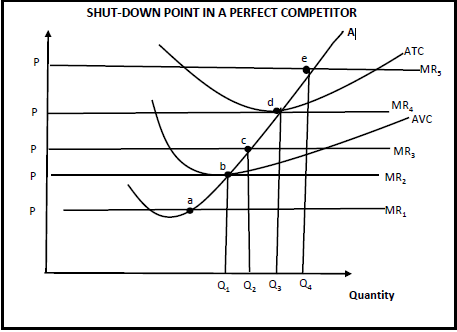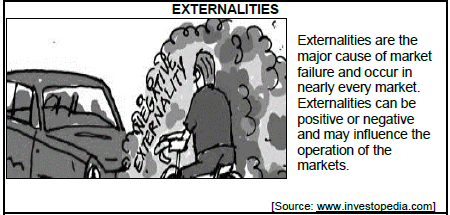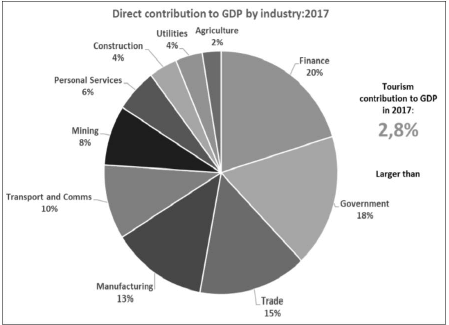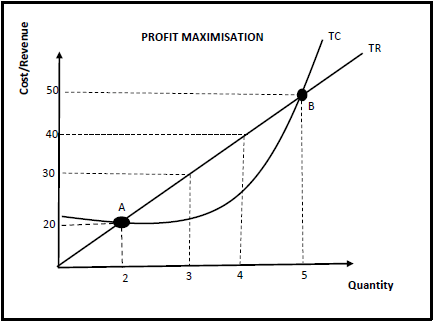Economics Paper 2 Questions - Grade 12 September 2021 Preparatory Exams
Share via Whatsapp Join our WhatsApp Group Join our Telegram GroupINSTRUCTIONS AND INFORMATION
- Answer FOUR questions as follows in the ANSWER BOOK:
- SECTION A: COMPULSORY
- SECTION B: Answer TWO of the three questions.
- SECTION C: Answer ONE of the two questions.
- Number the answers correctly according to the numbering system used in this question paper.
- Write the number of the question above each answer.
- Read the questions carefully.
- Leave 2–3 lines between subsections of questions.
- Answer the questions in full sentences and ensure that the format, content and context of your responses comply with the cognitive requirements of the questions.
- Answer only the required number of questions. Answers in excess of the required number will NOT be marked.
- Use only black or blue ink.
- You may use a non-programmable pocket calculator.
- Start EACH question on a NEW page.
- Write neatly and legibly.
QUESTIONS
SECTION A (COMPULSORY)
QUESTION 1 30 MARKS – 20 MINUTES
1.1 Various options are provided as possible answers to the following questions. Choose the answer and write only the letter (A–D) next to the questions numbers (1.1.1 to 1.1.8) in the ANSWER BOOK, for example 1.1.9 D.
1.1.1 The value of the inputs that are owned by the entrepreneur and used in the production process are called … costs.
- total
- implicit
- explicit
- marginal
1.1.2 Products produced by monopolistic competitive firms are …
- unique.
- homogeneous.
- differentiated.
- the same.
1.1.3 In economics, the long run refers to the time period where …
- all the factors of production are fixed
- some factors of production are fixed
- all factors of production can change
- Only fixed costs are relevant
1.1.4 A feasibility study is generally used by the … sector for project evaluation.
- Private
- Foreign
- Public
- Financial
1.1.5 All other things being equal, demand pull inflation is most likely to result from an increase in …
- the level of the interest rate.
- rate of income tax.
- the cost of imported raw materials.
- government spending.
1.1.6 South Africans travelling overseas for leisure or business are called … tourists.
- outbound
- foreign
- inbound
- transit
1.1.7 Fish is an example of a … resource.
- non-renewable
- renewable
- basic
- common
1.1.8 Government can play a very important role in environmental sustainability through its … policy.
- monetary
- development
- urbanisation
- fiscal (8 x 2) (16)
1.2 Choose a description from COLUMN B that matches an item in COLUMN A. Write only the letter (A–I) next to the question numbers (1.2.1 to 1.2.8) in the ANSWER BOOK.
COLUMN A | COLUMN B | ||
1.2.1 | Unregulated market | A | Visiting museums and art galleries |
1.2.2 | Competition commission | B | Takes into account the effects of inflation on gross domestic product |
1.2.3 | Cartel | C | Enjoyment and appreciation of undisturbed nature |
1.2.4 | Private costs | D | Organisation of businesses that come into existence to form a collective monopoly |
1.2.5 | Constant prices | E | Investigates restrictive business practices |
1.2.6 | Eco-tourism | F | Obtained from the use of water, tides, the sun and wind |
1.2.7 | Residual waste | G | No major government influence and control |
1.2.8 | Green energy | H | Created in production |
I | Incurred by businesses when producing goods and services | ||
(8 x 1) (8)
1.3 Give ONE term for each of the following descriptions. Write only the term next to the question numbers (1.3.1–1.3.6) in the ANSWER BOOK.
1.3.1 Minimum earnings required to prevent a firm from going off and using the factors of production elsewhere
1.3.2 An institution or mechanism that brings together buyers and sellers of goods and service
1.3.3 Consumption by one person does not in any way reduce consumption by another person
1.3.4 Condition of low growth, high unemployment and high rates of inflation
1.3.5 A place listed by United Nations Scientific and Cultural Organisation (UNESCO) as having special cultural or physical significance
1.3.6 Traditional knowledge that has practical application for the daily survival (6 x 1) (6)
TOTAL SECTION A: 30
SECTION B
Answer any TWO of the three questions from this section in your ANSWER BOOK.
QUESTION 2: MICROECONOMICS 40 MARKS – 30 MINUTES
2.1 Answer the following questions.
2.1.1 List any TWO examples of collective goods. (2)
2.1.2 Why is the demand curve of a perfect competitor horizontal? (2)
2.2 Study the graph below and answer the questions that follow.
2.2.1 Identify the shut-down point from the graph above. (1)
2.2.2 Name the curve depicted by letter A. (1)
2.2.3 Briefly describe the concept shut-down point. (2)
2.2.4 Describe the nature of the products in perfect competition. (2)
2.2.5 What effect does the entrance of new firms have on the perfect market? (4)
2.3 Study the information below and answer the questions that follow.
2.3.1 Identify the type of negative externality depicted by the picture above. (1)
2.3.2 Name any ONE method used by government to reduce negative externalities. (1)
2.3.3 Briefly describe the concept negative externality. (2)
2.3.4 Explain how demerit goods cause market failure. (2)
2.3.5 Why would the government intervene in the operation of markets? (4)
2.4 Briefly explain the long run equilibrium position of a monopolist with the aid of a fully labelled graph. (8)
2.5 Why does the government provide merit goods and services? (8)
[40]
QUESTION 3: CONTEMPORARY ECONOMIC ISSUES 40 MARKS – 30 MINUTES
3.1 Answer the following questions.
3.1.1 List any TWO approaches to devising command and control. (2)
3.1.2 What is the impact of COVID-19 on foreign tourists into South Africa? (2)
3.2 Study the information below and answer the questions that follow.
THE CARBON BRIEF PROFILE: SOUTH AFRICA South Africa is the world’s 14th largest emitter of greenhouse gases (GHGs). Its carbon dioxide CO2 emissions are principally due to a heavy reliance on coal. However, a recently released draft electricity plan proposes a significant shift away from the fuel towards gas and renewables. Coal would continue to play a role for decades, the plan would see no new plants built after 2030 and four-fifths of capacity closed by 2050. [Source: www.carbonbrief.org] |
3.2.1 Identify, from the extract, the most emitted greenhouse gas in South Africa. (1)
3.2.2 State the industry that contributes most to global warming. (1)
3.2.3 Briefly describe the concept renewable resources. (2)
3.2.4 Explain voluntary agreements as means by the government to sustain the environment. (2)
3.2.5 How would consumers contribute in reducing climate change? (4)
3.3 Study the information below and answer the questions that follow.
SA RECORDS IN DOMESTIC TOURISM GROWTH The period from January to April 2019 showed exceptional growth on domestic tourism front. Domestic tourism trips rose by 59,7% – a staggering achievement. SA Tourism has been focusing on marketing campaigns that entice South Africans to travel in their country. [Source: www.tourismtattler.com] |
3.3.1 Name ONE marketing campaign that has resulted in growth in domestic tourism. (1)
3.3.2 State any ONE World Heritage attraction in South Africa. (1)
3.3.3 Briefly describe the concept domestic tourism. (2)
3.3.4 Explain the negative effects of tourism on the local community. (2)
3.3.5 How does tourism differ from other service industries? (4)
3.4 Explain the Kyoto Protocol as a major international protocol and agreements on sustainable development. (8)
3.5 Examine the negative effects of globalisation on environmental sustainability. (8)
[40]
QUESTION 4: MICROECONOMICS AND CONTEMPORARY ECONOMIC ISSUES 40 MARKS – 30 MINUTES
4.1 Answer the following questions.
4.1.1 Name any TWO criteria that an activity must satisfy to be a tourism activity. (2)
4.1.2 What would happen if one firm in a perfect market decides to increase its selling price? (2)
4.2 Study the extract below and answer the questions that follow.
[Source: Medium presentation for the Tourism satellite account for SA: 2017]
4.2.1 Identify the sector that contributed the least in GDP in 2017. (1)
4.2.2 What was the total contribution of tourism to GDP in 2017? (1)
4.2.3 Briefly describe the concept manufacturing. (2)
4.2.4 Explain how creative representative bodies distribute tourists effectively to tourist sites. (2)
4.2.5 How does tourism contribute in boosting the economy? (4)
4.3 Study the graph below and answer the questions that follow.
4.3.1 Identify from the graph above, the optimum output level. (1)
4.3.2 At which point from the graph above will the firm break-even? (1)
4.3.3 Briefly explain the concept total cost. (2)
4.3.4 Describe the marginal revenue curve (MR) of a monopoly. (2)
4.3.5 What is the significance of the South African Competition Act? (4)
4.4 Briefly explain the effects of tourism on employment and poverty. (8)
4.5 Examine the effects of setting a maximum price on petrol in South Africa. (8)
[40]
TOTAL SECTION B: 80
SECTION C
Answer ONE of the two questions from this section in the ANSWER BOOK.
Your answer will be assessed as follows.
STRUCTURE OF ESSAY | MARK ALLOCATION |
Introduction
| Max. 2 |
Body Additional part: Give own opinion/Critically discuss/Evaluate/Critically evaluate/Draw a graph and explain/Use the graph given and explain/Complete the given graph/Calculate/Deduce/Compare/Explain/Distinguish/ Interpret/Briefly debate/How/Suggest | Max. 26 |
Max. 10 | |
Conclusion
| Max. 2 |
TOTAL | 40 |
QUESTION 5: MICROECONOMICS 40 MARKS – 40 MINUTES
- Discuss in detail, without the use of graphs, the characteristics of an oligopoly. (26 marks)
- Examine the negative impact of oligopolists behaviour on consumers.(10 marks) [40]
QUESTION 6: CONTEMPORARY ECONOMIC ISSUES 40 MARKS – 40 MINUTES
- Examine in detail the consequences of inflation. (26 marks)
- Why is high inflation a concern for business performance? (10 marks) [40]
TOTAL SECTION C: 40
GRAND TOTAL: 150